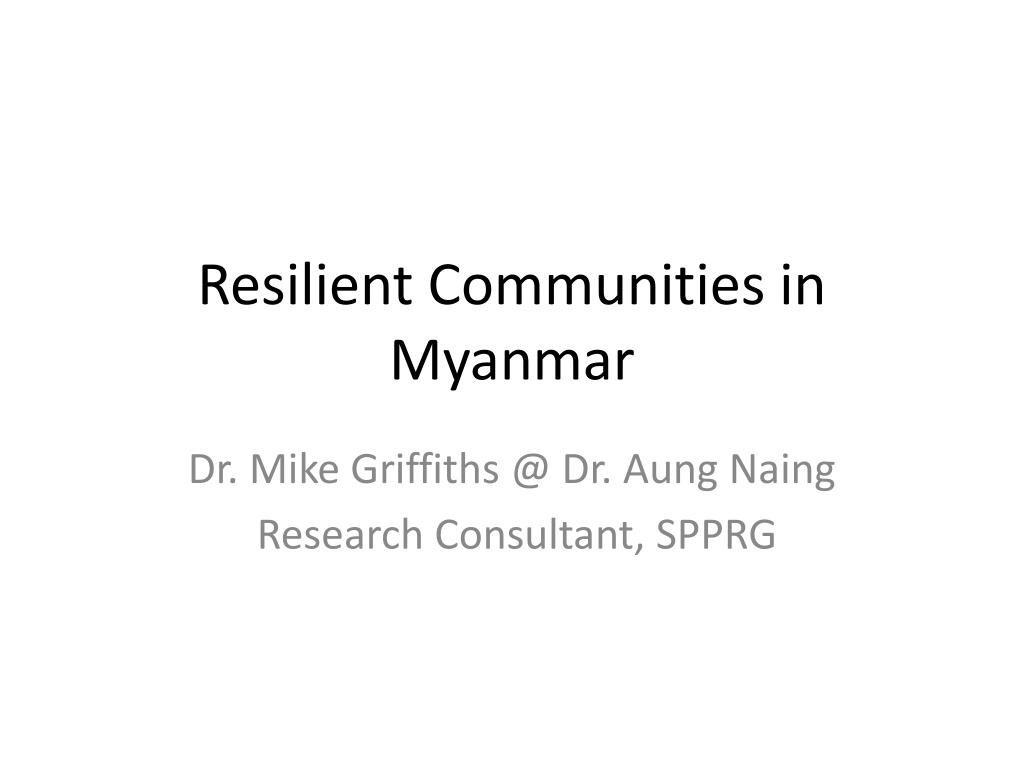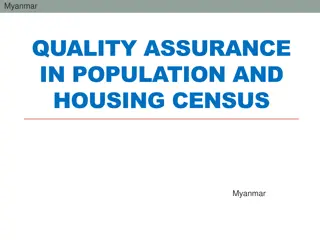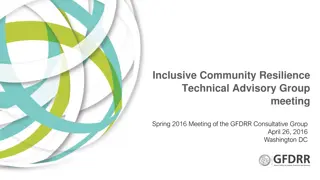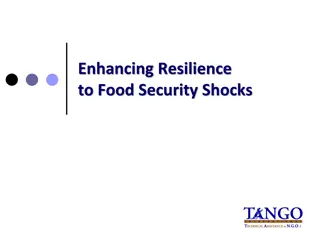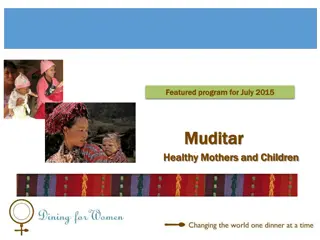Understanding Resilience in Community Development: Insights from Myanmar
Resilience plays a vital role in community development as it enables groups to handle external stresses effectively. This article explores why resilience is crucial, its definition, how it works, risks and threats, and what it looks like at the household level in Myanmar. The content emphasizes the importance of adaptive actions, enabling environments, and the balance between investive and erosive behaviors in determining resilience.
Download Presentation

Please find below an Image/Link to download the presentation.
The content on the website is provided AS IS for your information and personal use only. It may not be sold, licensed, or shared on other websites without obtaining consent from the author. Download presentation by click this link. If you encounter any issues during the download, it is possible that the publisher has removed the file from their server.
E N D
Presentation Transcript
Resilient Communities in Myanmar Dr. Mike Griffiths @ Dr. Aung Naing Research Consultant, SPPRG
Why is resilience an important concept? 1. Growth and development can be undermined by risk, threat and crisis. e.g. climate change, economic crisis, health crisis 2. Risks, threats and crisis are constantly changing 3. Systems which generate or mitigate risk are increasingly complex and inter-connected.
Definition and Key words The ability of groups or communities to cope with external stresses and disturbances as a result of social, political, and environmental change Absorbing Adapting Acting to change
How does resilience work? Resilience is characterized by actions which enable a person or system to cope with stress, to return to normality after the impact of stress, to adapt to be better able to cope with stress in the future, and to deal with the cause of the stress. This requires two things: Agency = willingness and capacity to act Opportunity = enabling environment in which to act strengthening capacity x enabling environment = adaptation and empowerment = resilience
Low price of produce due to climate change Natural disaster and Unsustainable Debt Type of Community Market fluctuation Unstable markets climate change Fishing 27.0% 17.2% 14.7% 11.3% 13.0% Uplands Agricultural 15.4% 8.2% 3.5% 2.5% 8.0% Dry Zone Agricultural 14.7% 8.6% 9.2% 2.0% 13.2% Coastal and Delta Agricultural 14.9% 7.0% 4.4% 1.3% 3.8%
What does resilience look like at household level? Patterns of behaviour which we would normally associated with resilient households. Actions which contribute to the strengthening of the household economy (such as investing in livelihoods or savings-called investive behaviour) Actions which weaken the household economy (such as taking high interest loans for consumption-called erosive behaviour). By mapping the balance of these types of behaviour in a household, we can make an estimate of their resilience.
% HH with livelihood investment 57.8% 56.5% 83.3% 46.2% 4.9% 67.6% 68.8% 63.9% 47.4% 71.3% 31.8% 29.6% 46.7% 58.4% 77.6% 2.5% % HH with Consumptive Loan 11.8% State/Region % HH with savings (any) 19.6% 9.3% 10.0% 5.2% 0.0% 18.5% 10.2% 23.5% 13.4% 22.8% 31.5% 4.4% 16.1% 16.9% 22.4% 0.3% NPT Kachin 10.2% Kayah 11.7% Kayin 17.7% Chin 34.3% Sagaing 17.3% Tanintharyi 29.5% Bago 11.7% Magwe 16.4% Mandalay 12.6% Mon 19.1% Rakhine 26.7% Yangon 12.0% Shan (S) 6.7% Shan (N) 5.5% Shan (E) 0.8% 44.9% 17.7% Ayearwaddy 13.5% 53.3% 17.8% Union 13.3%
What factors are associated with higher levels of resilience? National & Sub-national factors: Factor Effect Strength of Association Poverty (state & Regional level) High poverty, low resilience +++ Inequality (distribution of wealth) High inequality, low resilience +++ Income inequality High inequality, low resilience +++ Development status (infrastructure) Low development, low resilience + Village size No effect N
What factors are associated with resilience at community level? 1. Governance
What factors are associated with resilience at community level? 2. Presence of community social organization Villages with social organization Villages without social organization Average household resilience 2.1 1.98 Percentage classified as low- resilience Average resilience of poor households Percentage of poor households classified as low- resilience 18.5% 20% 1.91 1.81 22% 24%
What factors are associated with resilience at community level? 3. Gender equity Active participation by women in village affairs and equal wages associated with higher levels of resilience, particularly amongst poor households
What factors are associated with resilience at household level? 1. Income
What factors are associated with resilience at household level? 2. Vulnerability
What factors are associated with resilience at household level? 3. Food security Households which have experienced food insecurity in previous 12 months Households without food insecurity issues Average household resilience 2.05 1.49 Percentage classified as low- resilience 16% 30%
Towards more resilient communities Pro-poor policies which reduce inequalities Integrated approaches to rural (and urban) development Strengthening of community organizations Targeted interventions to increase incomes Interventions to address specific vulnerabilities (individual, household and communities)
